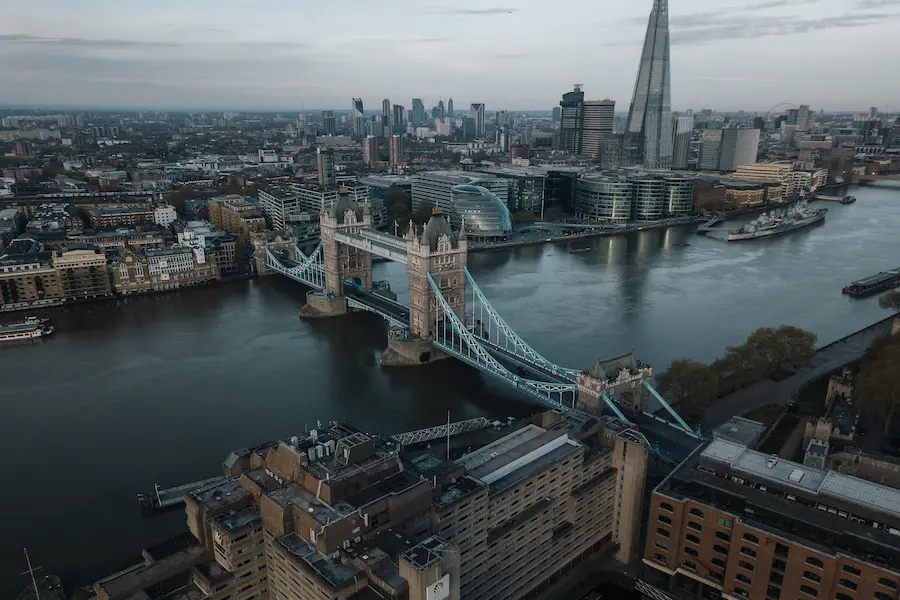The future of commodities: pioneering change with The Forest Stewardship Council (FSC)

The production of everyday commodities, such as palm oil, seafood and timber can have a huge impact on biodiversity, water, and the climate. The development of sustainable commodities is crucial to establishing a secure food system in the future; one that creates value for people and the environment.
As part of a thought-provoking new series, The Future of Commodities, we are interviewing some of the leading organisations that are protecting vital resources and pioneering change within their sectors. In this interview, Tallulah Chapman, Communications Manager at the Forest Stewardship Council (FSC) shares insight on what’s worked and what hasn’t; detailing progress made to date and the challenges faced along the way.
1. What is The Forest Stewardship Council (FSC) and why was it established?
Concerned about accelerating deforestation, environmental degradation and social exclusion, a group of timber users, traders and representatives of environmental and human rights organisations met in California in 1990. This diverse group highlighted the need for a system that could credibly identify well-managed forests as the sources of responsibly produced wood products. The concept of FSC and the name were coined at this meeting.
Today the Forest Stewardship Council® (FSC®) is an international, non-governmental organisation dedicated to promoting responsible management of the world’s forests. FSC has developed a system of forest certification and product labelling that enables people to identify responsibly sourced wood, paper and other forest products. FSC works to improve forest management worldwide, and through certification creates an incentive for forest owners and managers to follow best social and environmental practices.
2. How is The Forest Stewardship Council (FSC) scaling up impact on responsible forest management worldwide?
Worldwide, there are currently 199 million hectares of forests and woods certified to FSC standards, split across 85 countries. There are also more than 33,000 FSC chain of custody certificate holders, who trade in FSC-certified products.
FSC’s unique governance model has shaped a global dialogue to define responsible forest management, leading to large-scale change on the ground and positive outcomes for forests and the people that depend on them. Unfortunately, much of the world still faces major forest challenges and we therefore need to be bolder, stronger, and measurably more effective. This is why the strategic plan declares our intention to more than double our share of global forest-based trade by 2020, to 20 per cent. The plan places emphasis on increasing FSC certification in tropical countries, and providing voice to those most affected by mismanaged forests – Indigenous Peoples, workers, communities, women, and smallholders – while meeting the needs of our current certificate holders.
3. What are some of the main lessons learn along the way?
FSC’s unique governance model, as mentioned above, can bring both rewards and challenges. We are governed by our members, who are divided into three different chambers according to their interests – environmental, social and economic, and are further split into sub-chambers of global North and South. This creates the unique democratic structure and processes of FSC. Every three years, members come together at the FSC General Assembly to propose, discuss, debate and vote upon motions. Whilst there are many advantages to this governance model, leading to more equitable decision making, it is not without complexity and can reduce the potential agility of FSC as an organisation.
4. How do you track progress to ensure change is being driven across the whole forest product supply chain – from improved local community livelihoods to increased consumer awareness?
All certificate holders are audited at least annually to ensure their compliance with the FSC standards and summaries of FSC forest management reports are publicly available.
FSC’s strategic plan commits us to delivering meaningful impact, reporting on outcomes, and using this information to refine the system further. At the 2017 FSC General Assembly a motion was passed to better leverage the FSC forest management audit process to generate consistent and accessible data on FSC-certified forests. This data is needed to meet demands for evidence on sustainability outcomes and support data-driven improvement of standards. The data generated will support FSC’s decision making, enable better evaluation and communication of the benefits of FSC certification, and help reinvigorate the value proposition of FSC.
Whilst this work is ongoing, FSC continues to collect certification case studies, monitor certificate holders via global market surveys and assess consumer awareness on a national and international basis.
5. What does a ‘climate-smart’ future for our forests look like?
Forests play a critical role in regulating the earth’s climate. By removing carbon dioxide (CO2) from the atmosphere, they form the world’s largest terrestrial store of atmospheric carbon. Conversely, when forests are cleared, large amounts of carbon are released into the atmosphere. Halting deforestation and forest degradation, maintaining forest cover, and ensuring its quality through sustainable forest management, all belong on an effective climate change mitigation agenda. Sustainable forest management can maintain, or restore, the carbon sequestration function of a forest, and is essential for safeguarding the forests that remain. Since 2015 all revised FSC forest management standards include requirements specifically designed to ensure the maintenance, conservation, or restoration of carbon sequestration and storage.
As part of our series “The future of commodities: Pioneering change” we’ve interviewed inspiring individuals working in sectors including cotton, beef and cocoa. Read the interviews here.
Greenhouse PR takes great pride in working with pioneers who are helping to tackle some of the world’s biggest environmental issues. If your organisation has a story to tell, we’d love to hear from you.




